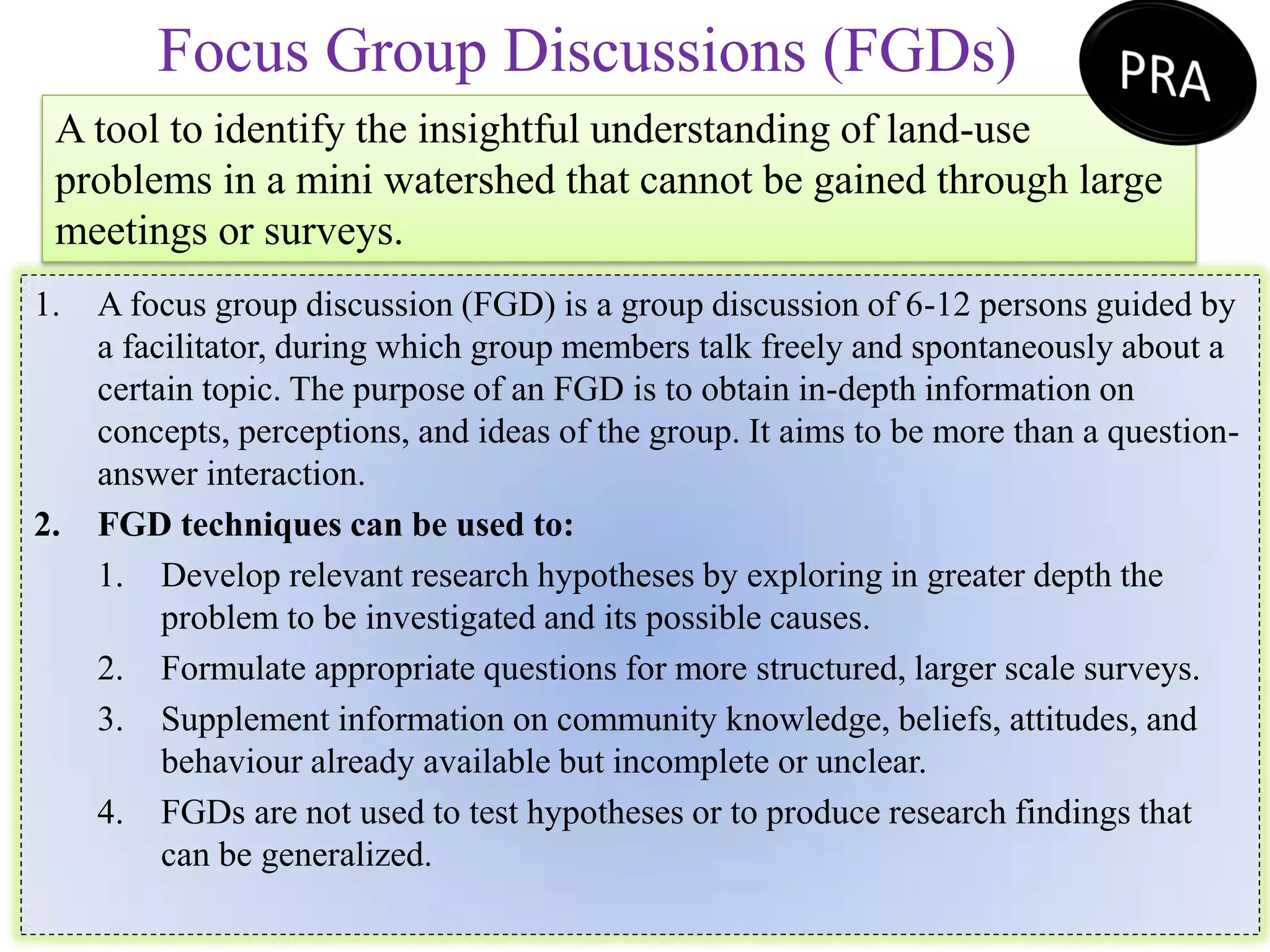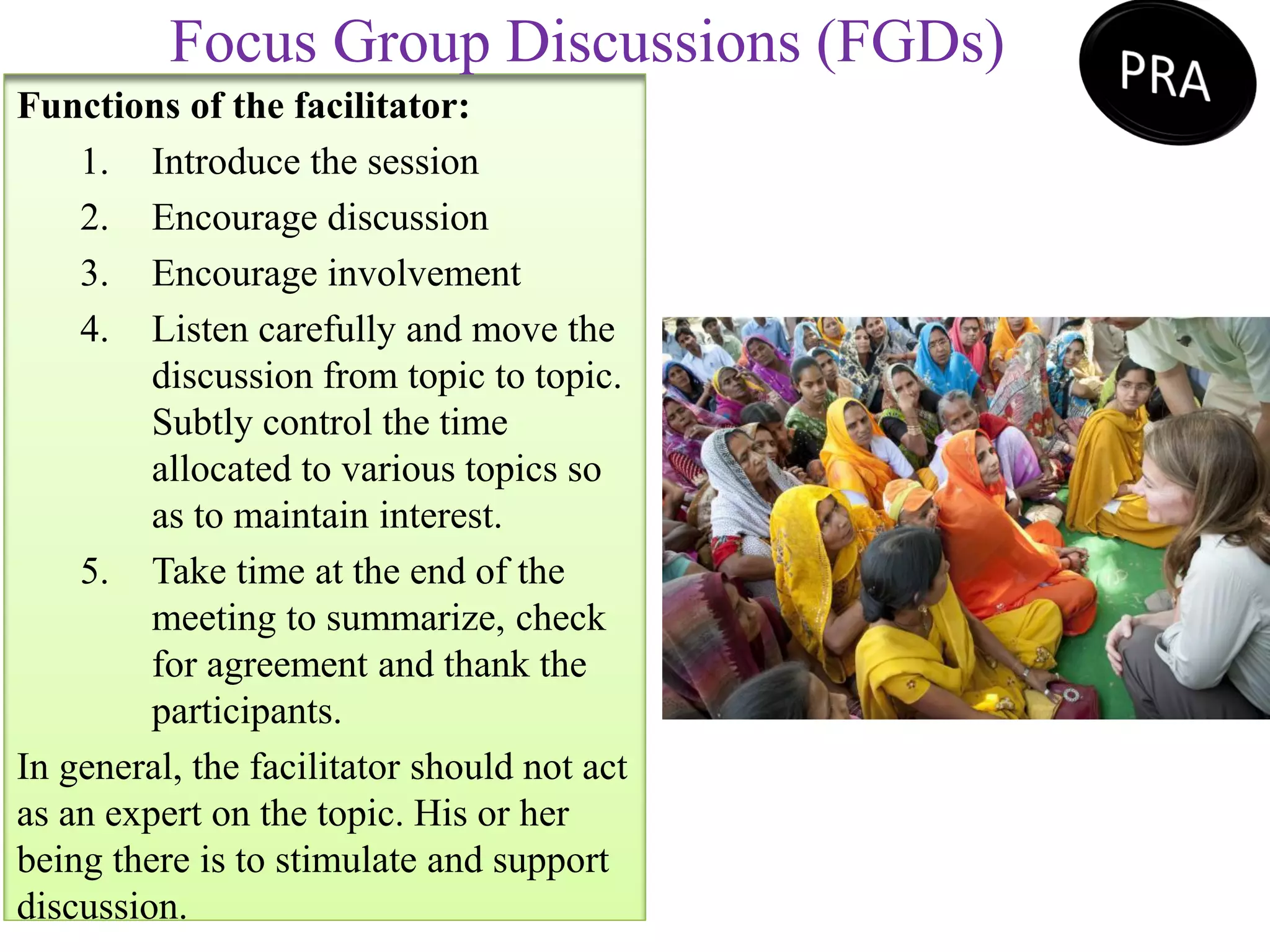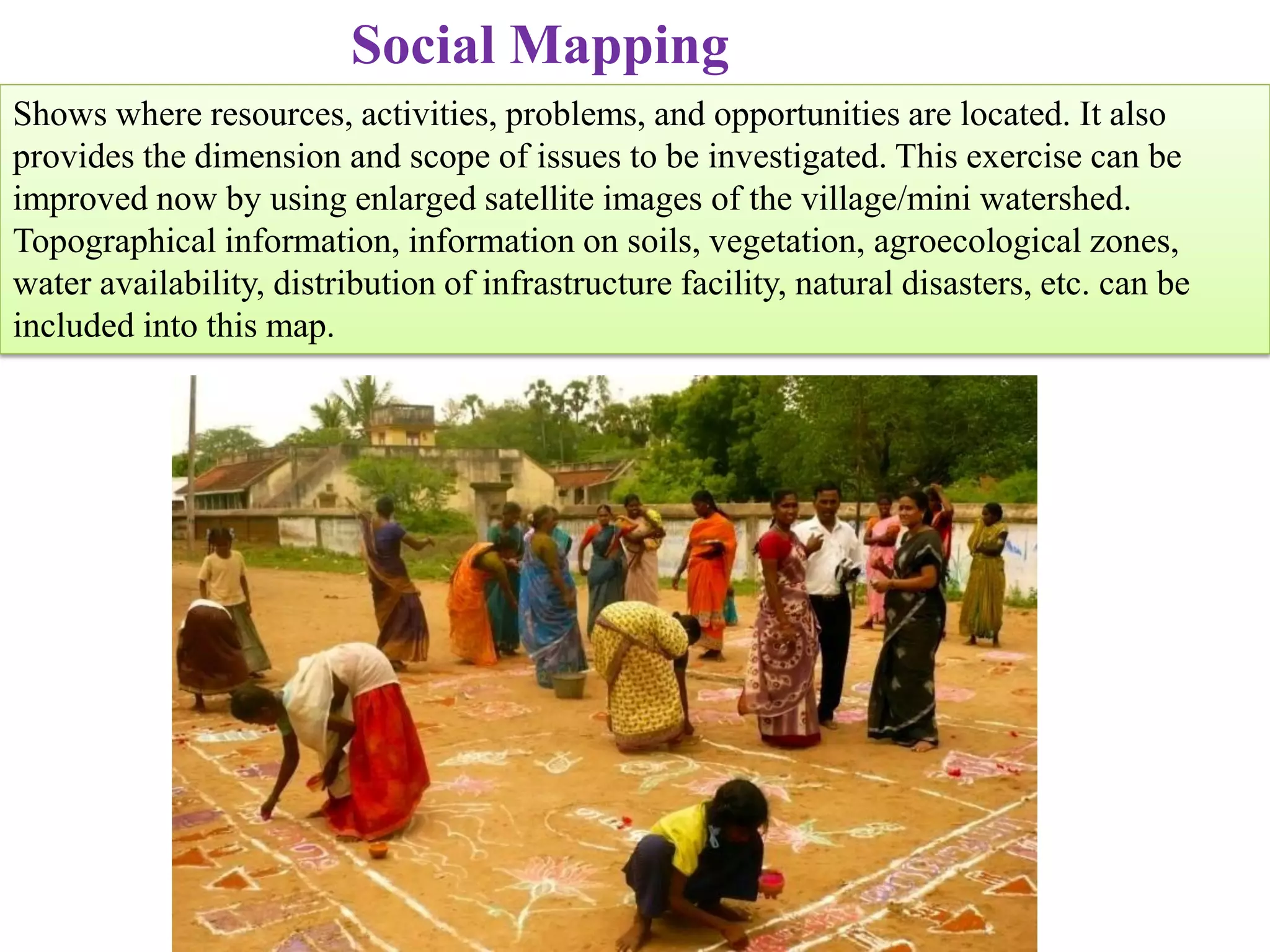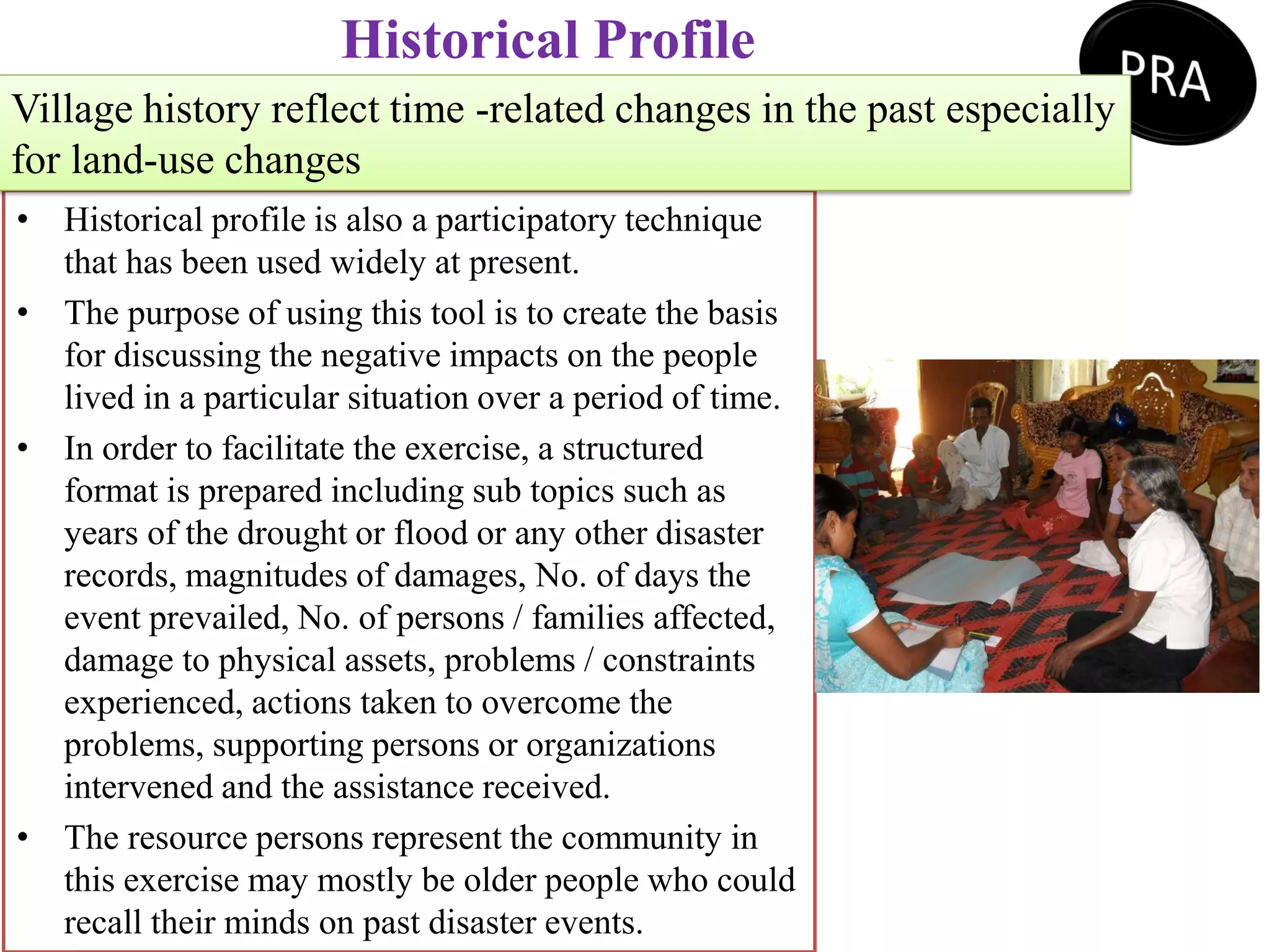The document provides an overview of participatory rural appraisal (PRA) tools and methods that can be used for participatory land use planning. It defines key terms like PRA and participatory land use planning. It then describes several commonly used PRA tools - focus group discussions, social mapping, historical profiling, seasonal calendars, wealth ranking, Venn diagrams, impact diagrams, case studies, and SWOT analysis. It provides details on how each tool is conducted and the types of information it can provide. The document concludes with proposing the structure and content for final group reports on participatory land use planning exercises.






















